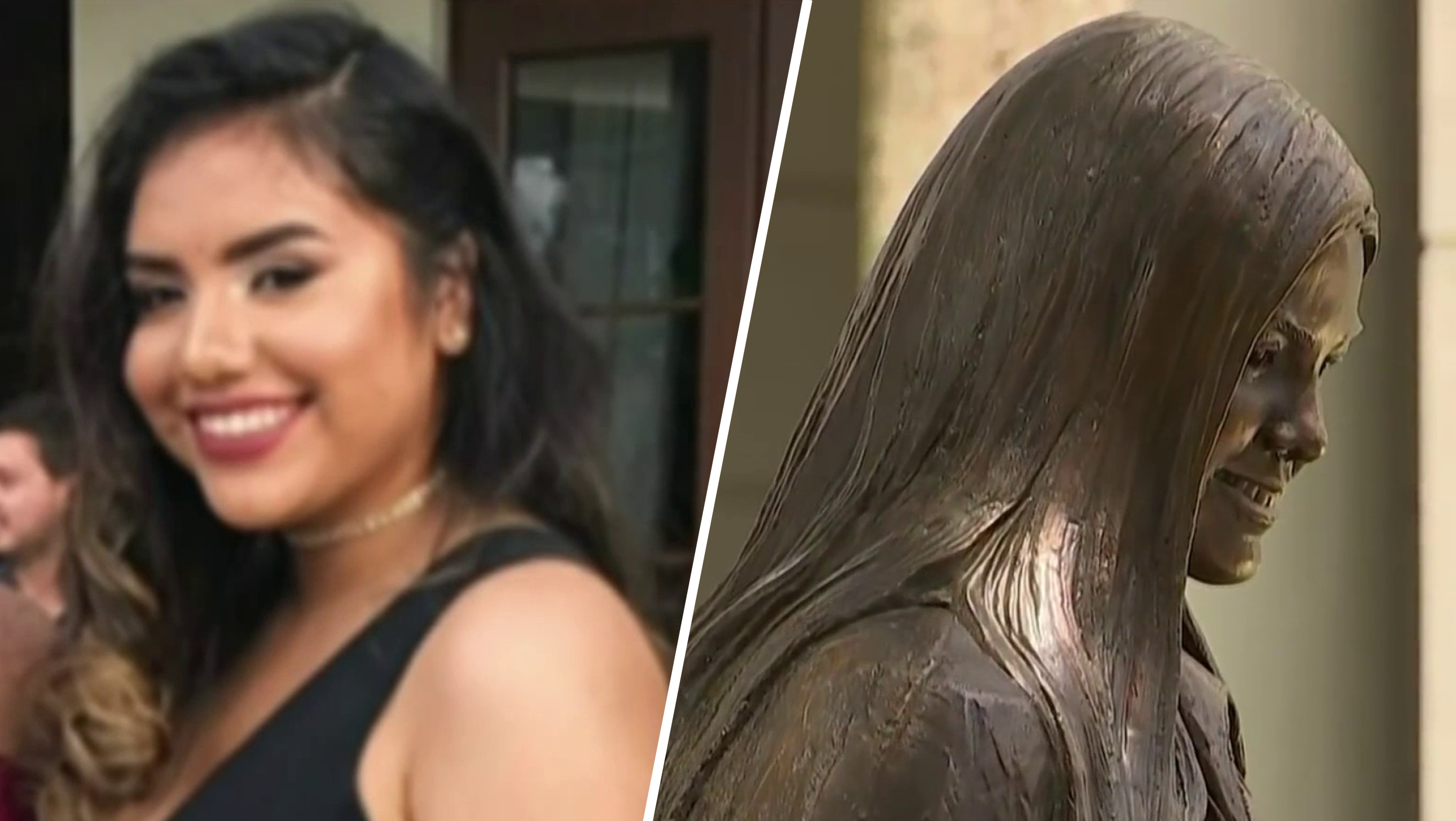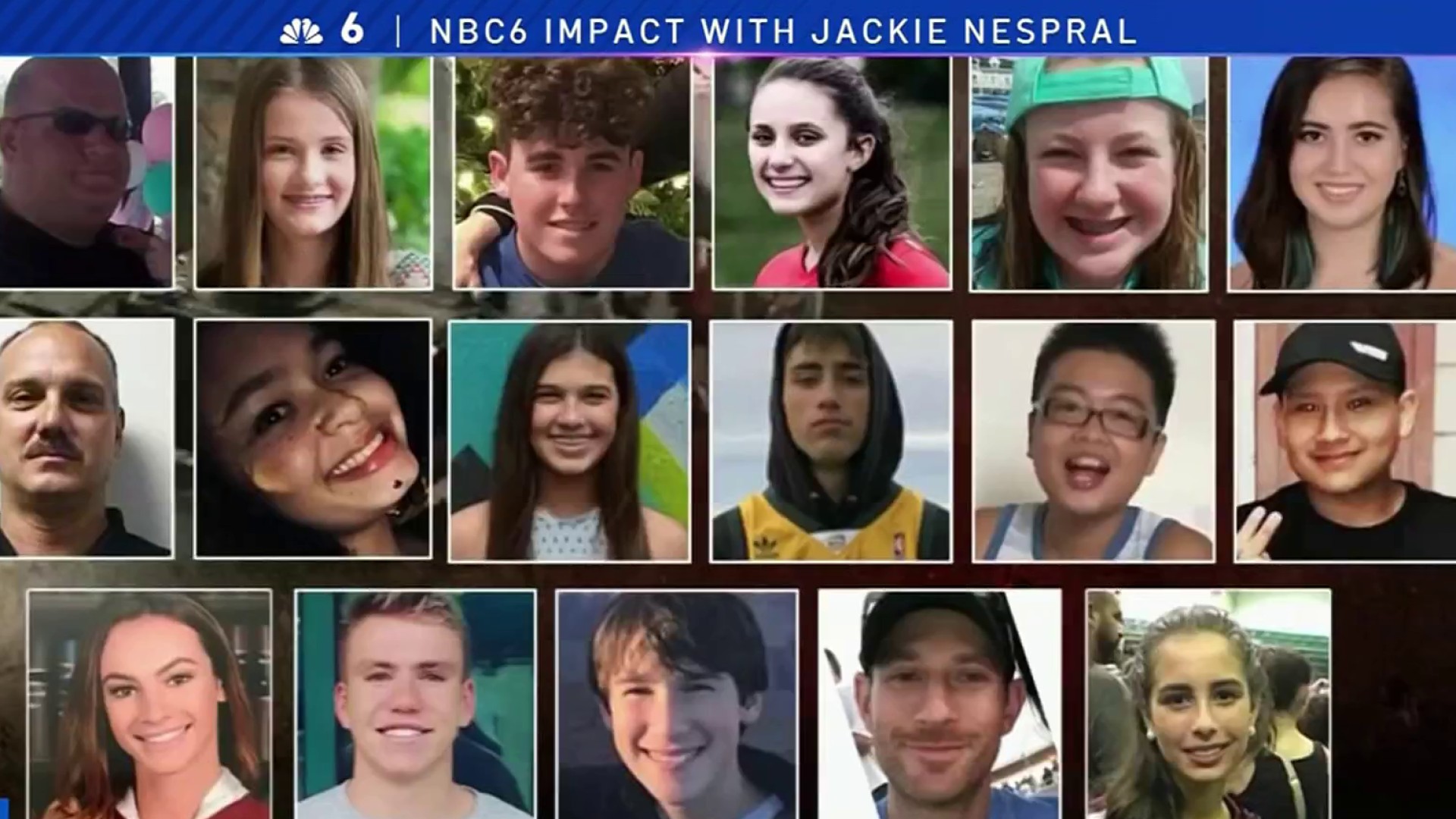Vice President Kamala Harris on Saturday toured the blood-stained classroom building where the 2018 Parkland high school massacre happened, accompanied by some victims' family members who are pushing for stricter gun laws and improved school safety.
The Vice President, however, was not welcomed with open arms by some who gathered outside the school to protest.
"I realized our country has become so desensitized to these acts of violence especially gun violence because the amount of mass shootings we have especially school shootings," said Sarah Hingoo, a junior at the time of the shooting who survived the massacre, told NBC6's Christian Colon.
Today, Hingoo is reminding the Vice President to not just address gun violence in America, also calling a ceasefire in Gaza.
Get South Florida local news, weather forecasts and entertainment stories to your inbox. Sign up for NBC South Florida newsletters.
"I'll believe she is doing something good by making these commitments to these families in person but I would not believe it if she continues to support the U.S. military sending aide to Israel," Hingoo added.
Harris' visit is the latest by elected officials and law enforcement and education leaders in recent months to the boarded-up, three-story building, which stands on the north side of Marjory Stoneman Douglas High School. The tragic landmark has loomed over the school's 3,600 students from behind temporary fencing since the Feb. 14, 2018, shooting that left 14 students and three staff members dead and 17 wounded.
Education Secretary Miguel Cardona toured the building in January and several members of Congress, mostly Democrats, have gone through since law enforcement returned custody of the building to the school district last summer.
Former student Nikolas Cruz, then 19, fired about 140 shots from his AR-15-style semiautomatic rifle during his six-minute attack. He pleaded guilty in 2021.
“The building is a time capsule,” said Democratic U.S. Rep. Jared Moskowitz, a Stoneman Douglas graduate who helped organize the visit. Harris, he said, will “learn about the failures of the building, the failures of the response to the shooting by law enforcement, the failures in the training of the teachers, the failures of threat assessments of the shooter and the failure of all the warning signs.”
Some Stoneman Douglas families who participate in the tours, along with President Joe Biden, want the sale of AR-15s and similar guns banned, as they were from 1994 to 2004, but there isn't sufficient support in Congress. Opponents, which include other victims' families, argue that such a ban would violate the Second Amendment and do little to stem gun violence.
Linda Beigel Schulman said the tour will show Harris the carnage a mass shooting creates — it no longer will be an abstract concept. Beigel Schulman's 35-year-old son, geography teacher Scott Beigel, was killed as he ushered students to safety in his classroom. The papers he was grading when the shooting began remain on his desk.
“She understands how important gun violence prevention is for us," Beigel Schulman said of the vice president. “But when you go into the actual building and see what actually happened, it doesn't matter that it is six years later, it really does something to you.”
Max Schachter, whose son Alex died in the shooting, uses the tours to persuade officials to enact school safety measures such as making doors and windows bullet-resistant. Alex, 14, died from shots fired through the window of his classroom’s door. Schachter said while there is disagreement over gun laws, school safety brings the sides together. He pointed particularly to a fall visit by Utah officials leading to that state enacting a $100 million plan to harden its schools.
“I couldn't save Alex, but every time I have officials come through that building, lives are saved,” Schachter said.
During Harris' visit, the White House says, she will announce a program to provide technical assistance and training to Florida and the other 20 states that have similar “red flag laws." Florida’s law allows officers, with a judge’s permission, to temporarily seize guns belonging to anyone shown to be a danger to others or themselves. The statute has been used more than 12,000 times since it was enacted six years ago in response to the Parkland shooting. Harris also will call on states without red flag laws to adopt them.
The building where the Parkland massacre happened were preserved as evidence for the 2022 penalty trial of Cruz, who received a life sentence instead of the death penalty, angering the victims' families. The structure also was saved for the trial of the school’s sheriff’s deputy, Scot Peterson, who was acquitted last year on charges that he retreated instead of confronting Cruz.
Cruz’s jury toured the building, but Peterson’s judge rejected prosecutors’ request to bring his panel to the school. The Broward County school district plans to demolish the building this summer over the objection of some victims’ families who want to show it to more officials.
Even officials who don't support stronger gun laws learn from the tours, leading to better discussions, Moskowitz said. He believes there is broad support in Congress for increased school safety spending and a federal “red flag” law.
Cruz had a long history of troubling and bizarre behavior, including animal torture. In the weeks before the shooting, he had been reported to local law enforcement and the FBI by people fearing he was planning a mass shooting, but no action was taken. He legally purchased 10 guns in the 17 months between his 18th birthday and the massacre.



